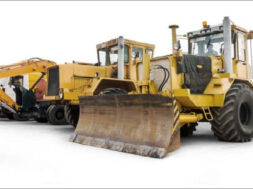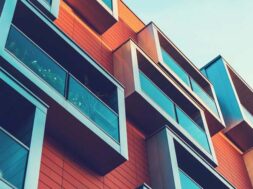How to Polish Concrete?Simply put, polishing concrete is similar to sanding wood. Heavy-duty polishing machines equipped with progressively finer grits of diamond-impregnated segments or disks (akin to sandpaper) are used to gradually grind down surfaces to the desired degree of shine and smoothness.The process begins with the use of coarse diamond segments bonded in a metallic matrix. These segments are coarse enough to remove minor pits, blemishes, stains, or light coatings from the floor in preparation for final smoothing. Depending on the condition of the concrete, this initial rough grinding is generally a three- to four-step process.
The next steps involve fine grinding of the concrete surface using diamond abrasives embedded in a plastic or resin matrix. Crews use ever-finer grits of polishing disks (a process called lapping) until the floor has the desired sheen. For an extremely high-gloss finish, a final grit of 1500 or finer may be used. Experienced polishing crews know when to switch to the next-finer grit by observing the floor surface and the amount of material being removed.
During the final polishing step, some contractors spread a commercial polishing compound onto the surface to give the floor a bit more sheen. These compounds also help clean any residue remaining on the surface from the polishing process and leave a dirt-resistant finish.
Is there any Polished Concrete Standards?There are no published standards for polished concrete, but it is generally agreed that the concrete must be polished through the sequence of disks ending with 1800-3500 grit diamonds to be considered polished concrete. At this level the concrete will exhibit a glossy sheen and high reflectivity without the use of a topical coating.
Polished concrete in not simply exposing the rock in the concrete mix than applying a sealer. During the polishing process an internal impregnating sealer is applied. The sealer sinks into the concrete and is invisible to the naked eye. It not only protects the concrete from the inside out, it also hardens and densifies the concrete. This eliminates the need for a topical coating, which reduces maintenance significantly (versus if you had a coating on it).
Waxing the surface would be defeating the purpose of a fully polished floor because the concrete floor itself is already shining, so there is no need to put something on the floor that would then need to be maintained.
Polished Concrete CostPolished concrete pricing is basically dependent upon how many levels of grinding will be required to get the floor to a suitably smooth surface. The cost for polished concrete can go up from there depending upon any decorative effects that are applied such as staining or scoring, etc.Because polishing is a multi-step process, customers can choose the level of sheen from satin to high-gloss that meets their maintenance and aesthetic requirements. This versatility makes polished concrete an ideal flooring material for a variety of applications. Polishing contractors say their primary customers include: large warehouses and warehouse outlets; retail stores; hotels and restaurants; office buildings; auto showrooms; and private residences etc.
Ease of maintenance is the key reason many warehouses and retail facilities are opting for polished concrete. Not only are polished floors easy to clean, requiring only occasional damp mopping, they hold up well to heavy forklift and foot traffic. They also eliminate the need for messy waxes or coatings as well as the associated labour, time, and expense to apply them. Once more, the glossy surface resists the marks of forklift truck tire sand staining from oil and chemical spills.
The high light reflectivity of polished concrete is another important benefit, especially for office buildings, hotels, restaurants, and other public facilities that want to project a bright, clean, professional image. "Some customers simply want a look that's unique that polishing can give concrete a higher degree of shine, similar to polished marble or granite, that can be achieved with a high-gloss coating. This makes polished concrete a particularly good alternative for homeowners or businesses that can't afford marble or granite floors but want the same brilliant, mirror-like finish. To replicate the colour of stone, sometimes apply stain to the concrete during the polishing process or polish concrete that has been integrally coloured. It's also possible to produce a terrazzo look by grinding through the top few millimetres of the concrete surface to expose the aggregate
What concrete floors can be polished?Almost any structurally sound concrete floor, whether new or old, can be polished. But there are some exceptions. For new floors, no special mix design is required to achieve good results. However, the floor should be in place at least 28 days before polishing begins to ensure adequate curing. Some retail and warehouse facilities that plan to polish their floors after placement may specify the installation of as smooth a floor as possible to minimise the polishing steps required.
Existing floors typically require some surface preparation prior to polishing to remove dirt, grease, coatings, or blemishes. However, floors that are wavy, need extensive patching, or are extremely porous may not be good candidates for polishing. An experienced contractor can usually determine a floor's suitability.
To help solidify and densify polished concrete surfaces, some contractors apply penetrating hardeners to the concrete, normally after the first step of the grinding process. These products, which can be applied to new or existing floors, work by reacting chemically with the concrete to form a hard, crystalline structure. They also prevent dusting of concrete and offer extra protection from water penetration and staining.
How do you maintain the shine?Although keeping polished concrete shiny requires minimal effort and expense, some regular care is necessary. A simple maintenance program of occasional dusting to remove grit and damp mopping with a neutral cleaner to enhance the shine is recommended. Some manufacturers sell special cleaners and conditioners for polished concrete that not only clean the surface, but also leave behind a dirt-resistant film. These products can be applied with a mop or auto scrubber and do not require buffing.
With basic cleaning, polished concrete should keep its lustre for years. Eventually, though, the shine can dull, especially in high-traffic areas. Fortunately, it’s easy to restore the gleam. Sometimes simply buffing the floor with a commercial polishing compound will do the trick. If more touch-up is necessary, the floors can be lightly re-polished with a fine-grit abrasive.
Polished Concrete versus Other Flooring MaterialsDecorative polished concrete offers a number of advantages that other flooring materials can't match, particularly when it comes to durability, performance and sustainability. Here, we compare polished concrete floors with some of the alternatives.
Wet vs. Dry Concrete PolishingContractors can polish concrete using wet or dry methods, but typically they use a combination of both. The wet process uses water to cool the diamond abrasives and eliminate grinding dust. Because the water reduces friction and acts as a lubricant, it increases the life of the polishing abrasives, particularly the resin-bonded disks, which can melt at high temperatures. A disadvantage of the wet process is the mess. Crews must collect and dispose of the slurry that's generated, which slows productivity.
Ceramic tile
Vinyl or linoleum
Wood or wood laminate
Natural stone (such as slate or marble)
Polished concrete
Available in a wide spectrum of design options
Yes
Yes
Yes
No
Unlimited
Longevity and performance
Good
Good
Good
Excellent
Excellent
Ease of maintenance
Good
Good (linoleum may need occasional waxing)
Good
Good (linoleum may need occasional waxing)
Excellent
Can radiate heat and store solar energy
No
No
No
Yes, depending on the material
Yes
Vulnerable to humidity and moisture damage
No
Yes
Yes
No
No
Can harbour mold, mildew, dust mites and other allergens
No
No
Yes, (mold and mildew, if the flooring becomes wet)
No
No
Is a sustainable flooring alternative
Yes
Maybe(if using linoleum made from all natural materials)
Maybe(if made from reclaimed wood)
Yes
Yes
Average lifecycle cost
Low
Intermediate
Intermediate
Low
Low Extremely
Dry polishing requires no water. Instead, contractors use machines equipped with dust-containment systems that eliminate virtually all of the mess. Typically dry polishing is used for the initial grinding steps, when more concrete is being removed. As the surface becomes smoother, and crews switch from the metal-bonded to the finer resin-bonded diamond abrasives, they generally change to wet polishing. However, some manufacturers have introduced resin-bonded disks that are designed to withstand the friction of dry polishing, allowing the entire process to be done dry.
Maintenance for polished concrete is very minimal. Regular care includes occasional damp mopping to remove dust or grit. Some contractors recommend a neutral cleaner and conditioner that cleans the surface, and leaves behind a dirt-resistant film.
Except for high traffic areas, polished concrete will keep its shine for years. If it should ever dull, it is easy to restore. Sometimes simply buffing the floor with a commercial polishing compound will do the trick. If more touch-up is necessary, the floors can be lightly re-polished with a fine-grit abrasive.
Bomanite India launches Vertical SystemBomanite India recently announced its latest innovation in decorative concrete technology. Bomanite India Vertical System, the latest solution to Bomanite India portfolio, is a technology combined with lightweight-polymer-modified-mixture to enable workability in vertical surfaces. The vertical system is indeed a revolutionary approach to walling design and capabilities. Bomanite India Vertical System can refurbish old, worn out surfaces and turn them into new and exciting expanses of colour, pattern, stone and texture. It can be used on interior or exterior, horizontal surfaces and offers large design capabilities with the ability to create custom rock structures or refined walling surfaces. With Bomanite’s full line of coloration systems available, the vertical system can be coloured to fit any projects.
With the tight deadlines and budget constraints often faced by architects and designers, it is the perfect solution. It can take colour to new heights, placing vibrant details on walls and other vertical surfaces where colour could not be normally placed, allowing for unlimited design potential.
Bomanite Vertical System brings vision to life. It combines the latest technology in lightweight-polymer-modified-wall-mixture renders with the age old beauty of Bomanite India Imprinted Surfaces.
The advantages of vertical imprint system over other cladding system are: • No need to purchase costly adhesives and glues• Significantly reduces workforce• Hazard of falling stone is eliminated• No need to stop the traffic in the work area• Reusable cost effective green plastic frame work• Stone like finish to the walls• Custom made patterns produced at architects request• No exploitation of natural resources.
Cookie Consent
We use cookies to personalize your experience. By continuing to visit this website you agree to our Terms & Conditions, Privacy Policy and Cookie Policy.









